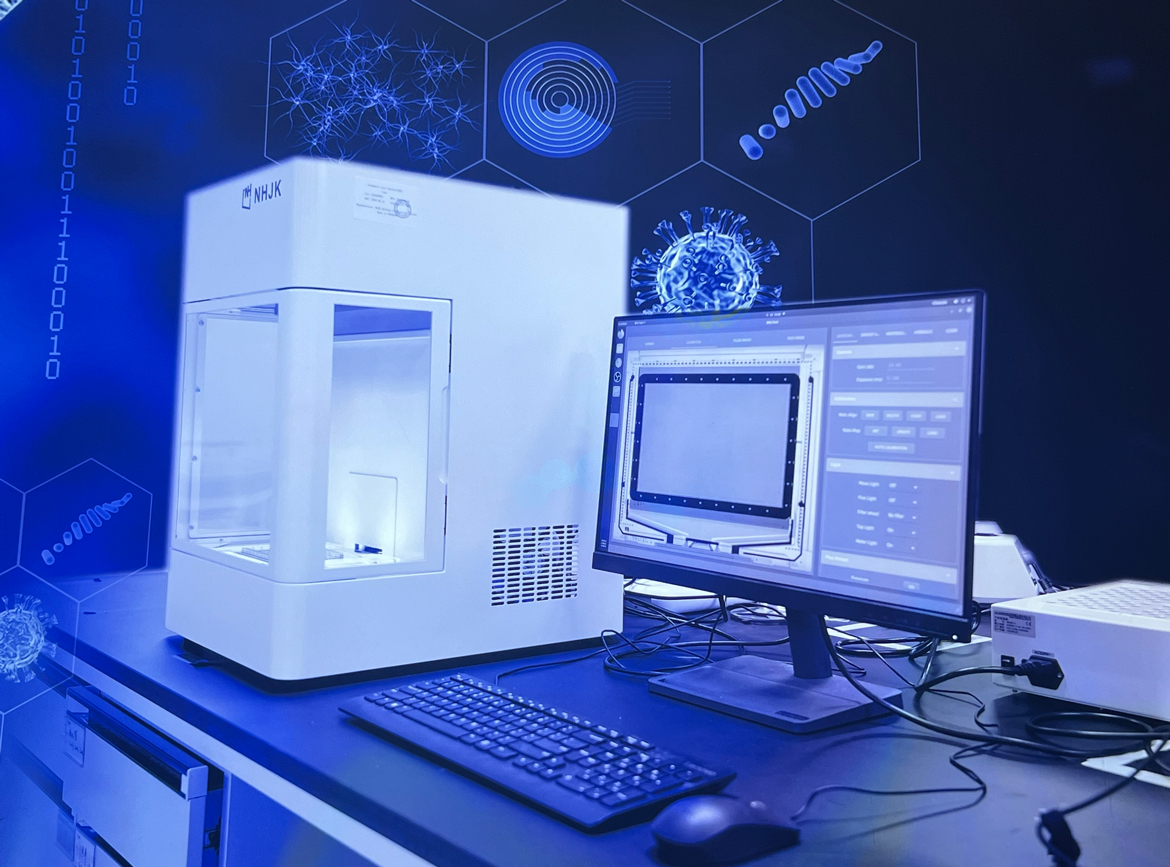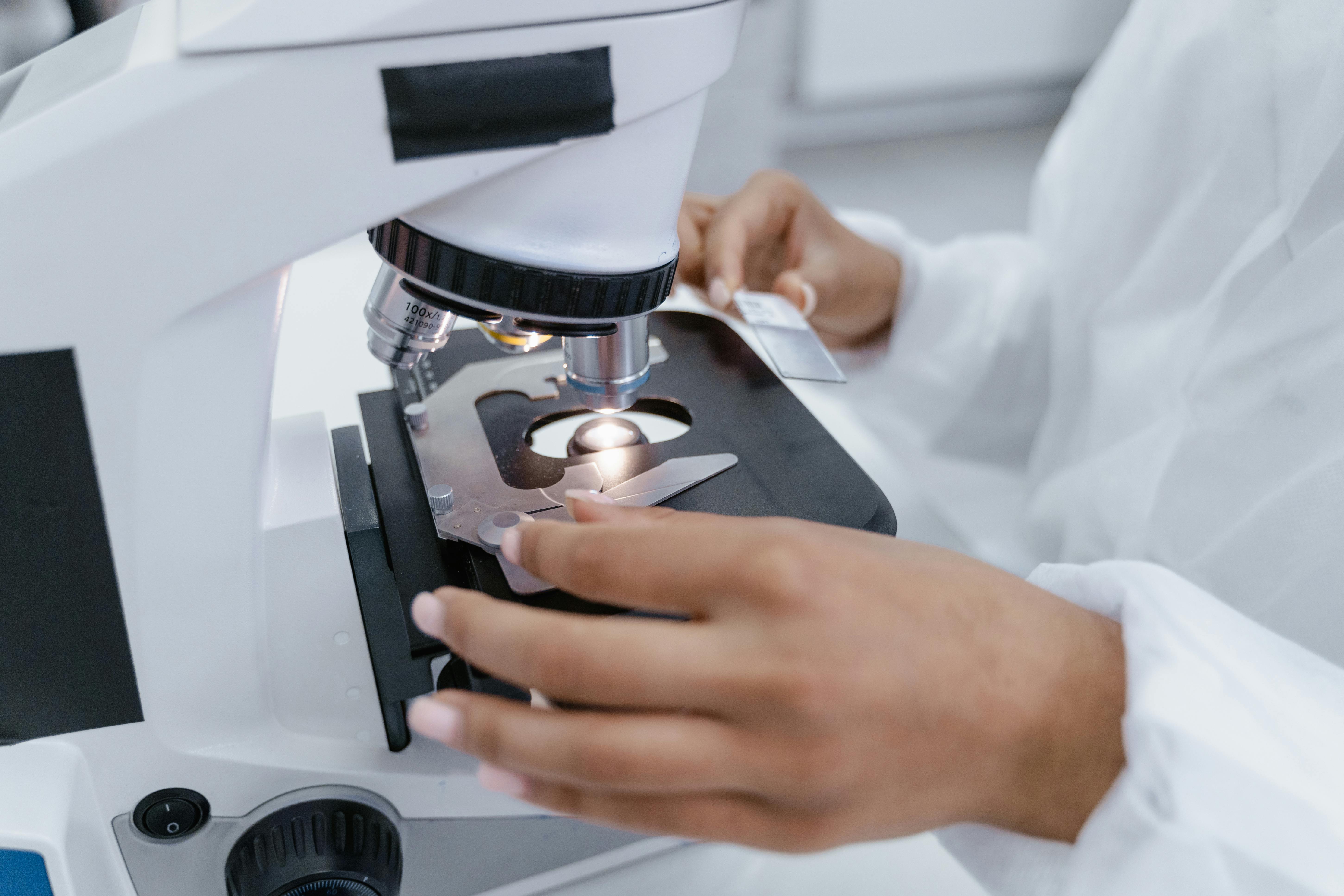Traditional biomedical experimental processes use pipettes or robotic arms to move reagents among EP tubes or 96-well plates during reactions, which are both complex and time-consuming, thus occupying more than 70% of time and labor costs in fields such as research, gene sequencing, DNA synthesis, and medical diagnosis.
The Atomic Vision 1.0 chip combines microfluidics, MEMS and electrowetting theory(EWOD), thereby realizing high-throughput and flexible control of micro-droplets(pL-nL-uL). The Proprietary-TFT-based chip allows addressing millions of independent pixels by G/S scanning

By combining it with image recognition algorithms, the AtomicVision1.0 chip accurately captures the size, shape, and position of droplets, converting this data into electronic information.
The use of path planning algorithms allows the AtomicVision1.0 chip to perform separate operations on different droplets, facilitating parallel processing of multiple tasks and preventing cross-contamination.
The integration of the AtomicVision1.0 chip with artificial intelligence (Al) technology significantly enhances the precision and complexity of droplet manipulation.
The combination of the AtomicVision1.0 chip and deep learning algorithms remarkably improves the precision of cell counting and classification, offering efficient solutions for single-cell identification and separation.
The AtomicVision 1.0 instrument integrates functions such as fluid control, bead purification, thermal cycling, and optical detection. By combining with GPU-Al algorithms, protocol
automation can be realized. Only a few reagent loading processes are required for researchers to complete complex biological experiments in the chip, providing real “sample-to-answer “solutions. So far, all the functions we support include: sample preparation, library preparation, and qPCR.
The digital microfluidic experimental platform has the following advantages
1)Precise sample manipulation:
1.Microsample processing: The sample droplet volume can be as small as picotiter level. This can minimize the consumption of precious biological samples to the greatest extent while improving the sensitivity and accuracy ot analysis.
2.Single-cell manipulation ability: lt can encapsulate a single cell in a tiny droplet for precise manipulation, which is beneficial to improve the application performance in single-cell analysis, studying cell heterogeneity and specific cell reactions.
2)High degree of automation and programmability:
1.Microsample processing: The sample droplet volume can be as small as picotiter level. This can minimize the consumption of precious biological samples to the greatest extent while improving the sensitivity and accuracy ot analysis.
3)integration and benchtop size:
1.High System Integration: Multiple functional modules can be integrated onto a single chip, such as droplet manipulation, magnetic control, and temperature control modules. This allows for the formation of a miniaturized biomedical analysis system that only occupies desktop space in the laboratory.
2.Strong expandability: lt is easy to combine with othe biomedical detection technologies and equipment such as optical detection and electrochemical detection, further expanding its application range and functions.
4)Efficient reactior and analysis:
1.Rapid mixing and reaction: t can quickly achieve the mixing and reaction of reagents in droplets. The increase in the specific surface area of droplets accelerates the reaction rate, which is conducive to instant detection and rapid diagnosis.
2.Real-time monitoring and analysis: lt can monitor the reaction process and changes of biomolecules in droplets in real time to obtain experimental data and results, providing real-time feedback and analysis for researchers.
5)Reduce the risk of biological contamination:
1.Closed operating environment: The operation of droplets on the chip is carried out in a closed environment, avoiding the contact of samples with the external environment and ensuring the accuracy and reliability of experimental results.
2.Reduce cross-contamination: Each droplet is operated independently, avoiding cross-contamination between different samples and improving the specificity and accuracy of experiments


